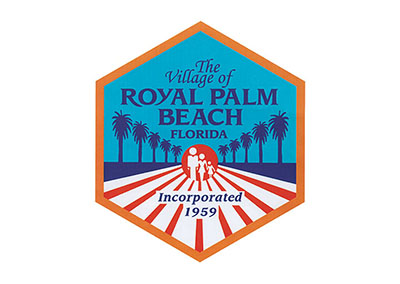Cameras will soon be operational at major intersections in Royal Palm Beach, monitoring and recording every vehicle license number that enters and leaves the community.
Village Manager Ray Liggins said that Village Engineer Chris Marsh has a contractor working on the license plate readers, which are already in use in several Palm Beach County municipalities, including Wellington, Palm Beach and West Palm Beach.
“It should be done soon,” Liggins said, adding that the project has been criticized as being expensive and an invasion of privacy.
“You know what’s expensive?” he said. “The police department is expensive.”
The camera project is expected to cost about $400,000, compared to an overall cost of the village’s Palm Beach County Sheriff’s Office contract at about $8 million per year and $145,000 per deputy.
“These things catch criminals,” Liggins said. “This is how you catch criminals stealing cars. This is how you catch people breaking into homes. The number of people who used to come into the community from all over, north, south, east and west to rob us to break into our cars and steal, this solves that problem. You’re not going to be able to get into or out of the village without passing one of these cameras. These license plate cameras catch bad guys, they really do.”
He said that whenever the PBSO has a report of a stolen car or a crime, one of the first resources they turn to is the license plate readers.
“They go straight to the cameras, they look, and they find it. It’s amazing to me, actually,” Liggins said, explaining that when a stolen car’s license plate number is put into the system, the license plate readers pick up the number and send it to the PBSO.
Liggins added that thieves come into the community from all over, as well as from within the community. Frequently, they are crimes of opportunity, such as people who leave their keys in the car when they go into a store.
“These cameras catch them,” he said, adding that one of the big costs has been getting power to the cameras, since the county has been unwilling to share its power sources at intersections with the village.
“There’s a cost to get them all in, but once you do that, then you have your annual maintenance costs,” Liggins said, adding that anyone who drives down State Road 80 (Southern Blvd.), Okeechobee Blvd., State Road 7, Crestwood Blvd. and Royal Palm Beach Blvd. will get picked up by the cameras. “This is something that will definitely keep us a safer community.”
He added that having the cameras operational will serve as a deterrent to crimes, since many criminals will be aware that they exist.
Marsh said that the camera project is underway, with some delays of installation along Southern Blvd. due to Florida Department of Transportation rules that did not allow for the installation.
“All the cameras should be configured and up and running within the next two to three weeks,” he said. “We thought we would be able to tie into the county’s power at a lot of these signals, and they didn’t want us to do that, so we had to set up meters with FPL. That increased the cost a bit.”
Marsh explained that most of the 28 cameras are set up near signalized intersections.
“The village pays the energy bills for all the signals on the county roads and village roads,” he said. “The deal they had with FPL was that if they’re not metered connections, if they were to add another device to that connection, they would have to convert to metered connections.”
That means that Royal Palm Beach had to add a meter at each of those locations with power to the cameras.
Marsh noted that the camera information is shared with several different agencies.
“There is a database located down in Miami where this information goes to and is shared among other law enforcement agencies,” he said, explaining that there is another proprietary database that is shared by vehicle repossession agencies. “That information is made available to law enforcement agencies as well. These repo agencies don’t get what the law enforcement agencies put into it.”
The information system has been set up by Motorola.
“The amount of data that is being put into the Motorola database is very substantial,” Marsh said. “A majority of repo companies use that one, and many law enforcement agencies use it, so it was a good solution as a way to get lots of data from a lot of different agencies.”
Marsh said the system is useful in issuing amber alerts, as well as live tracking of vehicles.
“Moving down the road, they can see where they’re headed, and set up enforcement to catch them,” he explained.








